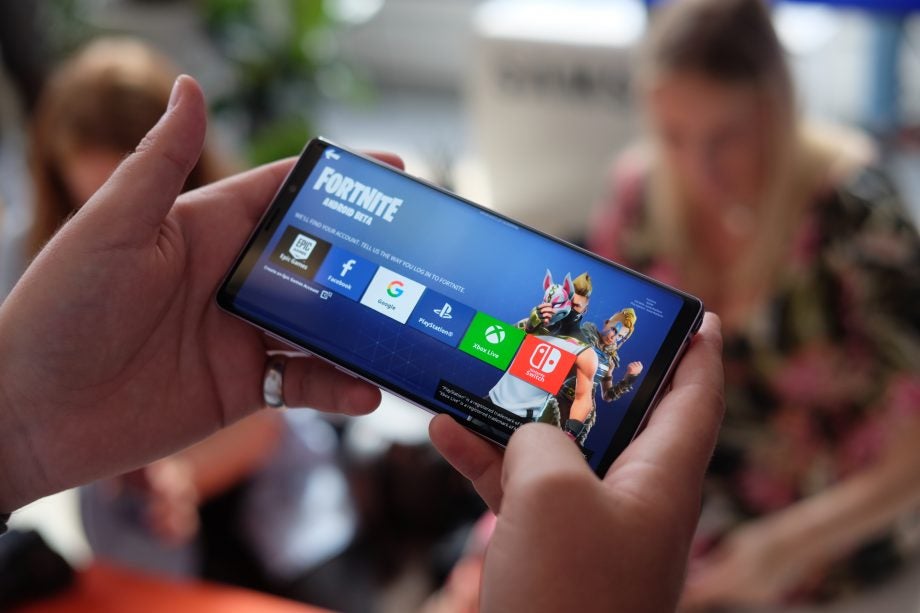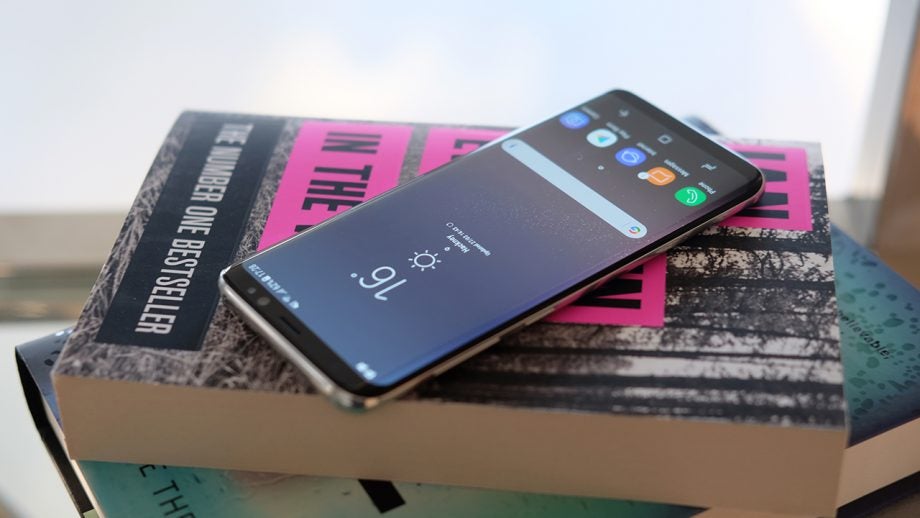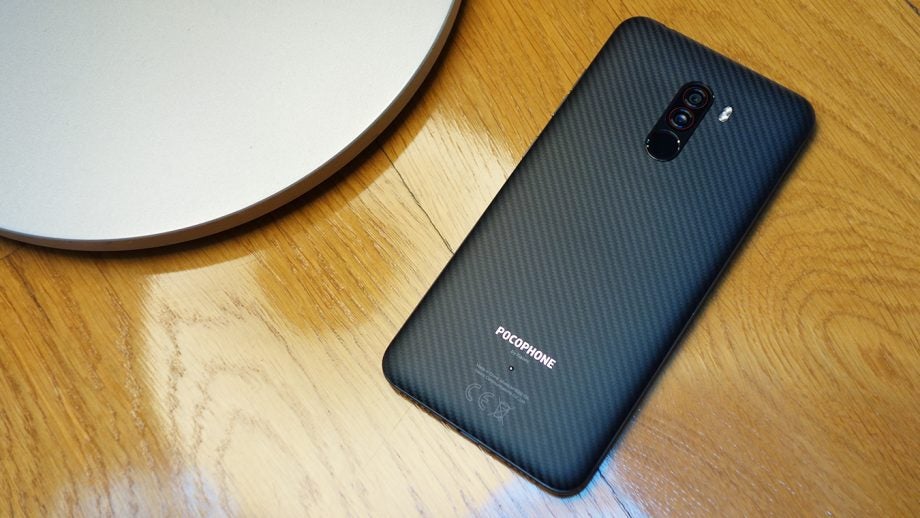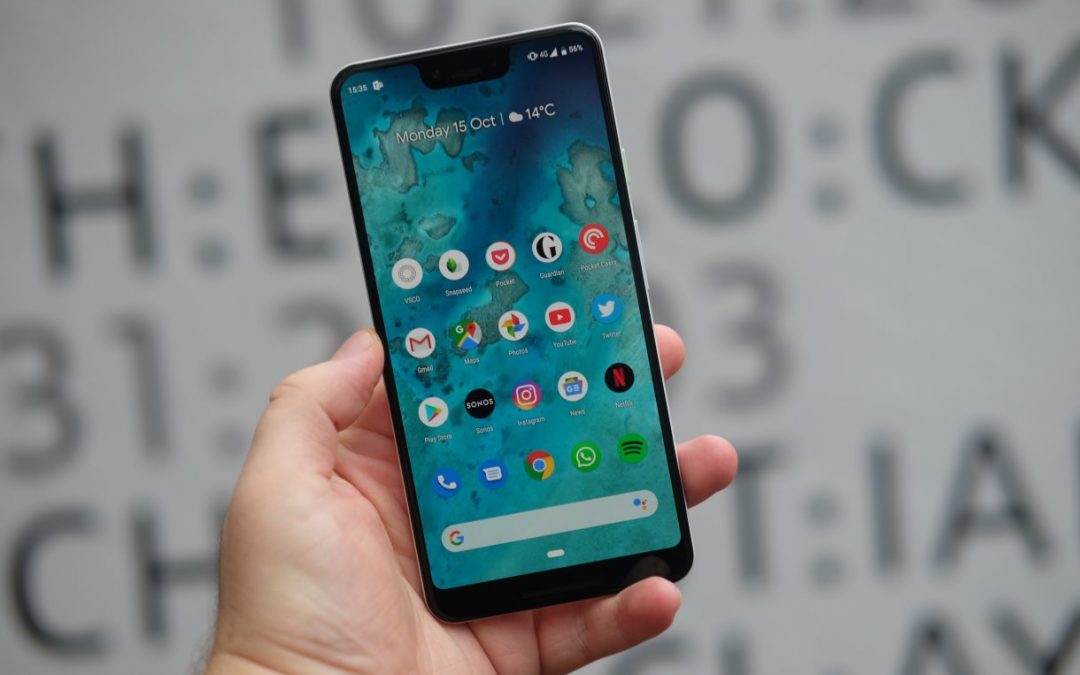Looking for a new Android phone?
Look beyond the iPhone XS, XS Max and iPhone XR. There’s a wealth of amazing Android-powered hardware out there that in most cases offers more for your money.
Perhaps the Samsung Galaxy S9 with its wireless charging, water resistance and lossless zoom with grab you, or maybe the Sony Xperia XZ3 or Huawei P20 Pro‘s OLED displays and excellent cameras are what you’re after?
Huawei Mate 20 Pro: Feature packed smartphone

Pros:
Lovely display
Serious amount of features
Great camera
Unbeatable battery life
Cons:
EMUI is a poor version of Android
There’s been a load of stunning Android phones in 2018, yet the Huawei Mate 20 Pro is certainly the one with the most features.
It packs an in-display fingerprint sensor, unmatched battery life and even 40w charging to juice the huge 4200 mAh battery in less than an hour. Oh, and there’s wireless fast charging too.
What makes this phone so great is that all these features work fantastically well. The triple camera array on the back takes excellent shots and the OLED HDR display is colourful and vibrant.
The only real issue we have with this phone is the software. Huawei’s EMUI remains a weakness and it’s even more obvious on such a great phone.
Samsung Galaxy Note 9: Awesome Display

Pros:
- Lovely display
- Loads of power
- Clever S Pen
- Big battery
Cons:
- Bixby button is an annoyance
- Uncomfortable to hold
The huge 6.4-inch display is gorgeous, Exynos 9810 platform speedy and there’s 128GB storage as standard. It also impresses with endurance, comfortably lasting the day thanks to its 4000mAh battery. You’ve even got an enhanced S Pen: a handy stylus that’s great for drawing or taking notes and now doubles as a wireless remote for certain functions.
The camera system is very similar to the S9 Plus: you’ve got two 12-megapixel cameras on the back, one for lossless zoom and one for regular shots. That main camera can also switch between apertures of f/1.5 and f/2.4, making it great for letting lots of light in when shooting in low light. There’s an 8-megapixel camera on the front that’s good for selfies and you can also record super slow-motion video or footage at up to 4K at 60fps.
Google Pixel 3: Best phone Google offered till now

Pros:
- Google’s Android is the best Android
- Breathtaking cameras
- Fast wireless charging
Cons:
- No form of face unlocking
- Scratches easily
Sure, it’s pricier than we would have liked starting at 67,085.76 Indian Rupee for the 64GB model (with the 128GB version costing Rs.10000 more) but this 5.5-inch handset is a looker that leverages Google’s impressive machine learning smarts to offer up one of the best smartphone cameras of the moment.
Unlike the larger Pixel 3 XL, the standard Pixel forgoes that gruesome notch while retaining a gorgeous extended Full HD+ resolution HDR-capable OLED display. There’s a pair of dual front-facing cameras, including a new ultra-wide angle offering for easier group shots. You can also expect speedy wireless charging and exclusive features as part of its Android 9.0 Pie user experience.
OnePlus 6T: The Allrounder

Pros:
- New fingerprint sensor feels cutting-edge
- Up-to-date, versatile OS
- Fast Charge is still great
- Great battery life
Cons:
- Camera’s Nightscape mode needs work
- Another headphone jack bites the dust
- Fingerprint sensor needs refinement
- Poor audio capabilities
Sure, the OnePlus 6T might be the company’s most expensive handset to date but it’s still about half the price of most of the other phones in this lineup. Starting at Rs. 37,999. , you get a Snapdragon 845-powered smartphone with either 6GB or 8GB of RAM and the latest available release of Android 9.0 Pie (with OnePlus’ own OxygenOS overlay on top).
The dual 16/20-megapixel camera is the same as the one on its predecessor but OnePlus has added in some cool new imaging technologies so that it can capture better HDR shots and better low-light shots, with a feature the company is dubbing ‘Nightscape’.
The integrated Smart Boost functionality is designed to ensure the phone stays smooth and reallocates resources based on your specific usage habits, while the improved Gaming Mode handles notifications and optimises performance too.
Two standout hardware features are its in-display fingerprint sensor, which the company claims is the fastest in the business, and the huge 3700mAh, boasts exceptional battery life that is, as ever, backed up by 20W Fast Charging.
Huawei P20 Pro: Excellent camera

Pros:
- Feels great
- Really good OLED
- Loads of camera features
Cons:
- Buggy software
- No headphone jack
Our current favourite Android Camera phone in 2018 is Huawei’s P20 Pro. Not only does it have three cameras on the back but the main 40-megapixel sensor gives you serious freedom with your shots. There’s even a fantastic night mode.
The shiny back is lovely, the sides perfectly curved and the even the notched 1080p OLED display is far from an eyesore. This really is Huawei’s best phone yet – or at least until we’ve reviewed the impressive-looking Huawei Mate 20 Pro.
But there’s one area that really needs improvement – the software. Huawei’s EMUI is a buggy skin over Android 8.1 that still needs work to make this and future Huawei devices truly competitive against the likes of Apple’s and Google’s native software experiences.
Galaxy S9 Plus: Samsung’s Flagship

Pros:
- Feels great for a big phone
- The OLED display is great and highly customisable
- Numerous camera features on offer
Cons:
- Battery life could be better
- AR Emoji are just bad
- Some lag with Samsung’s software
If you want a complete Android phone in 2018 then the Samsung Galaxy S9 Plus could be for you. It has a lovely 6.2-inch OLED display, speedy Snapdragon 845/Exynos 9810 (market dependent), plenty of RAM and a clever camera.
As the Note 9 which followed it, the main 12-megapixel sensor can switch between an f/2.4 and an f/1.5 aperture, which should ensure your low-light snaps come out nice and bright. It works well most of the time but you might end up with overly bright shots if you’re not careful. There’s also a secondary 12-megapixel sensor that can be used for telephoto shots and add bokeh around subjects too.
Samsung’s display tech remains some of the best in the business and the 6.2-inch OLED display at play on the S9 Plus is simply gorgeous. It’s brighter than previous Samsung phones and supports HDR content too.
This is certainly one of the best Android phones around, although the battery life doesn’t compare well with some of 2018’s other flagships.
Honor 10: Terrific value at the price

Pros:
- Sleek design
- Powerful hardware
- Good value
Cons:
- EMUI Android skin is bloated
- Some performance bugs
If you like the look of the P20, but can’t stomach spending more than £600 on a phone, then the Honor 10 is the device for you.
It has a similar mixed metal and glass design to most other 2018 flagships, and ticks nearly all the right boxes when it comes to hardware. Highlights include a wonderfully bright and clear 5.84-inch 2280p x 1080p FHD+ screen, all-day battery life, and above-average rear camera.
The 24-megapixel and 16-megapixel, f/1.8 dual-camera doesn’t have the third sensor seen on the P20 Pro and is completely absent of any Leica branding. For the money, however, you’ll struggle to do better.
Thanks to the addition of a nifty AI mode, the camera is able to automatically optimise its settings for the shot you’re going for. It does have a tendency to overexpose in bright light, however; but for the most part, the tech works a treat.
The Kirin 970 CPU also makes it every bit as fast as Android phones that are close to Rs. 27,228.95. This combination of factors makes the Honor 10 one of the best value Android phones on the market right now.
Moto G6: The best you can buy for under £250

Pros:
- Fantastic software experience
- Lovely screen
- Well built for the price
Cons:
- Some performance frustrations, especially with the camera
The best Android phone for under Rs. 22,696 you can buy right now is the Moto G6.
Previous entries in the G series have been super devices, and the G6 doesn’t break the streak. It has a lovely FHD+ 5.7-inch 18:9 display, a simple software experience and it feels really good thanks to the glass body and ergonomic curves.
The Snapdragon 450 processor paired with 3GB of RAM churns through most tasks with ease, though it does struggle with some of the more intense games. There’s 32GB storage as standard, and you can also add a microSD card to expand this further.
Our only real disappointment is with the camera. The actual photos from the 12-megapixel shooter are good, but the slow camera app makes for a frustrating experience.
LG G7: Stunning screen

Pros:
- Lovely screen
- Stunning audio
- Nice wide-angle lens
Cons:
- Ugly software
- Cheap design
- Average battery life
The LG G7 stands out as a result of its 18:9 display, which is an impressive 1000 nit LCD panel. This is one of the brightest displays around and it can display HDR content through Netflix and YouTube.
Inside is a Snapdragon 845 CPU, 4GB of RAM, 64GB of internal storage along with a fairly conservative 3000mAh battery. None of these components are groundbreaking but they’ll comfortably get the job done.
Like the V30 before it, there are two cameras on the back. One is your standard 16-megapixel sensor, while the other takes wide-angle shots, ideal for landscape photos. It’s a decent camera and it offers some impressive video recording options, too.
Samsung Galaxy S8: The price keeps coming down

Pros:
- Awesome display
- Stunning camera
- It’s actually innovative
Cons:
- Awfully placed fingerprint sensor
- Bixby is a bit of a dud
It may be last year’s model but the Galaxy S8 is still a great phone that has had a nice price cut since its successor launched. It has a fantastic HDR WQHD+ 5.8-inch display with next to no bezel (or notch, for that matter), and a sleek metal and glass design that’s curvy in all the right places.
It’s fast, too – obviously – and retains handy features such as IP68-certified dust and water resistance, fast wireless charging and a microSD card slot.
The single 12-megapixel sensor on the back may now lag behind 2018’s finest mobile snappers but it’s still a thoroughly capable camera overall. The 3000mAh battery is again great, although you’re still likely to need to charge the S8 every night.
Google Pixel 2: Affordable by the day

Pros:
- Truly amazing camera
- The best version of Android
- Nice display
Cons:
- Boring design
- Huge bezel
Another phone freshly replaced by a 2018 successor but the Google Pixel 2 is still worth a punt in its own right – especially following a tempting price cut.
A staple of the Pixel line, the least surprising feature here is the excellent camera, which despite being a year old continues to impress. It’s a 12-megapixel sensor with OIS (optical image stabilisation), which captures stunning snaps in any light. 4K video looks great, as do selfies as well.
The device is still fast, too, thanks to the combination of speedy Snapdragon 835 CPU, 4GB of RAM and software built by Google.
Android has never looked so good, and the neat tricks Google has added simply make it even better. You can squeeze the sides to bring up the Assistant and Lens can identify what’s in your photos. A 2700mAh battery lasts the day, while charging is snappy.
It’s IP67 water-resistant, which is great, but there’s no headphone jack and no wireless charging – a feature Google finally added on the newer Pixel 3 and 3 XL for 2018. It also looks, well, a little dull. That huge bezel might hide stereo speakers, but also makes it look as if it’s right out of 2015.
Pocophone F1: The best we Recommend

Pros:
- Excellent value for money
- Superb performance
- Fantastic battery life
- Decent cameras
Cons:
- MIUI for Poco will take some getting used to
- Thick bezels
- Plastic build
- No NFC
Taking a leaf out of OnePlus’ playbook, the Pocophone F1 places performance and affordability above all else. Fronted by a Qualcomm Snapdragon 845 and either 6GB or 8GB of RAM, this thing flies and is more than equipped to handle the latest games and other intensive apps – usually benchmarking around the same of higher than entrants like the Galaxy Note 9 and OnePlus 6.
The phone also boasts liquid cooling, a whopping 4000mAh battery that can last up to two days. Poco themed version of MIUI, Xiaomi Poco F1 price in India Costs Rs 20,999 for 6GB RAM and 64GB storage model. The 6GB RAM with 128GB storage version is priced at Rs 23,999, whereas the 8GB RAM and 256GB storage model costs around Rs 28,999.

